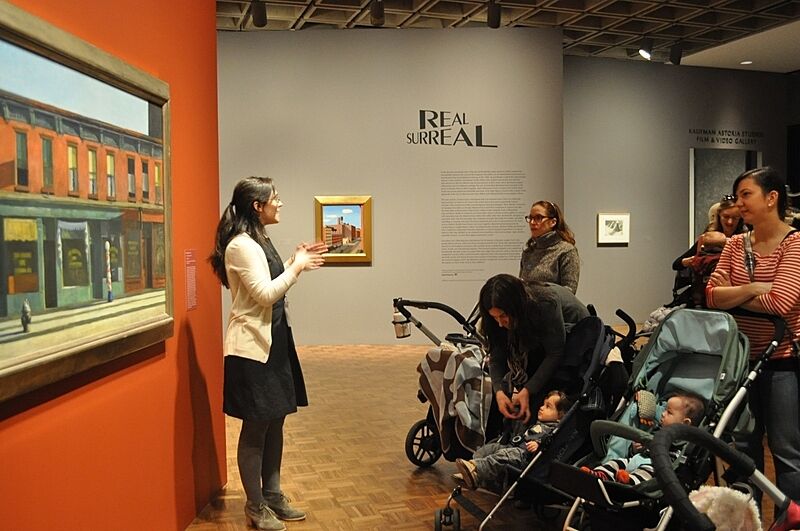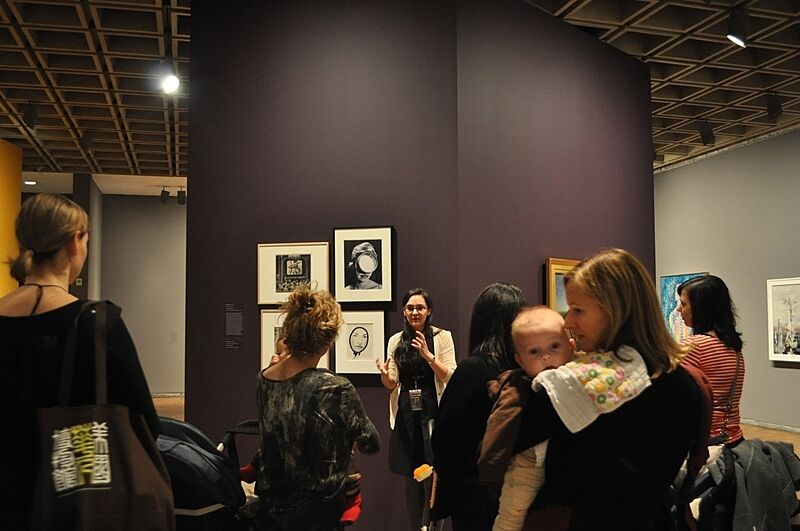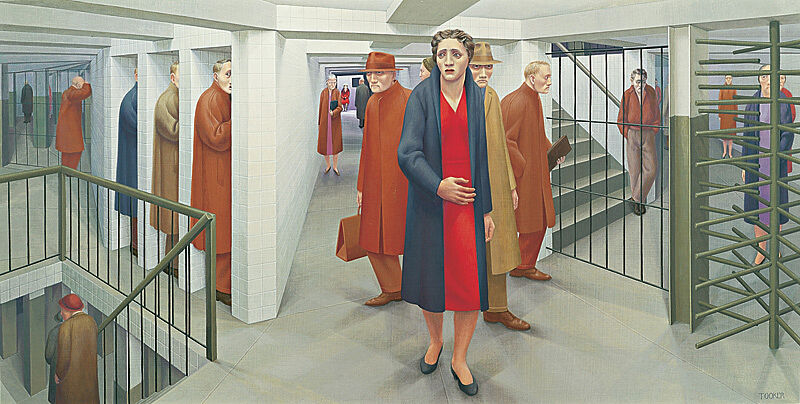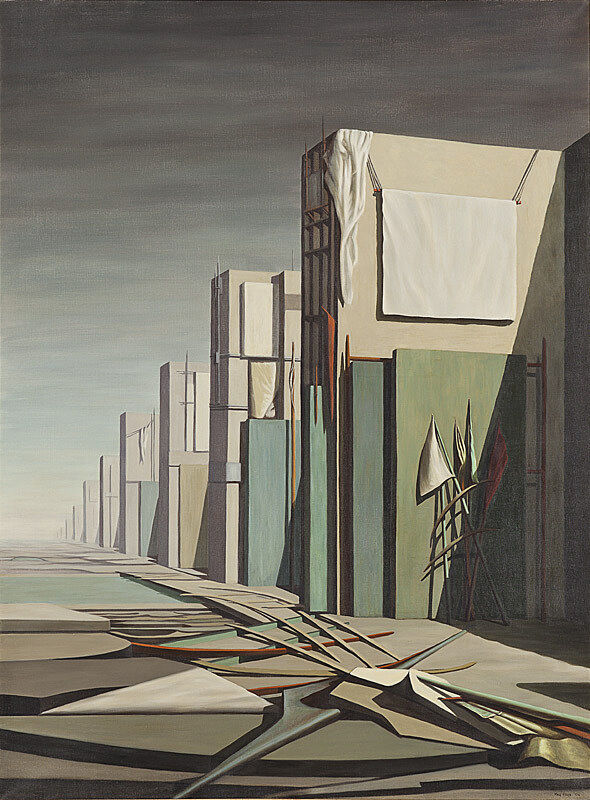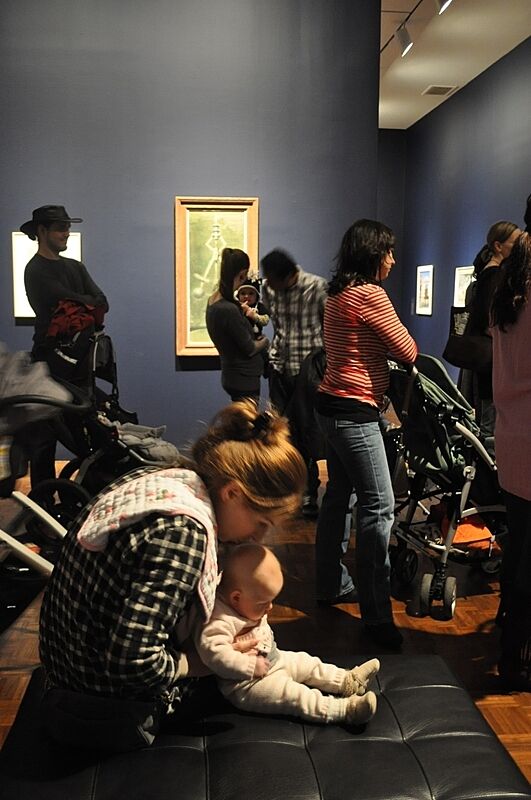Stroller Tour: Real/Surreal
Mar 2, 2012
On Friday, February 3, there was a lot of lively chaos in the Whitney’s second-floor galleries as babies and their parents participated in a Stroller Tour of the exhibition Real/Surreal. The Stroller Tour program invites parents to socialize and enjoy guided tours of current exhibitions at times when the Museum is closed to the public. As new moms and dads learned about the relationships between the observable world and the surreal in American art of the 1920s-1940s, the babies relaxed and took in the unfamiliar sight of the works on view.
The Whitney’s Joan Tisch Teaching Fellows lead the tours, providing interested parties with an informative and insightful experience. This week’s guide, Jennie Goldstein, said these hour-long tours are among her favorite because of the relaxed and casual atmosphere the babies exude in the gallery space. Goldstein’s enthusiasm was evident as she led the group through the galleries, revealing the unusual—or surreal—elements in even the most familiar works in the Museum’s collection.
When discussing George Tooker’s 1950 work, The Subway, Goldstein called attention to the Surrealist sense of eerie isolation that permeates the work. Emphasized by the woman in the red dress whose face is anxiety-ridden, none of these anonymous figures acknowledge or interact with one another. Trapped in niches or standing idly, they appear unable to navigate the maze-like passages of this invented subterranean world. Although the work is rendered with realistic details and compositional devices, Tooker ultimately transforms the familiar environment of a subway station—one most New Yorkers experience every day—into an ominous setting.
Conversely, Goldstein discussed how even the more iconic Surrealist artists of the era adopted the tenets of realism. In No Passing, a 1954 work by Kay Sage, the artist employs linear perspective in her depiction of a bizarre architectural structure. Each component in the work converges towards a single vanishing point, creating the realistic illusion of depth on the two-dimensional canvas. By calling attention to the ways that artists working within these two currents often borrowed components from each, Goldstein characterized realism and Surrealism as not resolutely distinct from one another, but engaged in an overlapping dialogue.
Numerous attendees complimented Goldstein on her ability to keep multitasking parents engaged throughout the tour. As program staff recognize and welcome the realities of bringing young children into the galleries, Stroller Tours provide the opportunity for parents to spend time at the Whitney without having to hire a babysitter or ever rush out to quiet a fretful infant.
By Elizabeth Pisano, Education Intern

